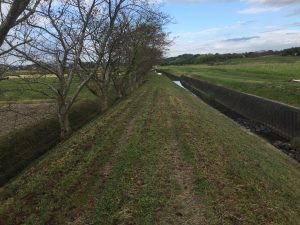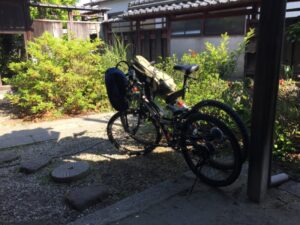Autophagy and Shinto Shrines
Get the Japanese Superfood List
Autophagy is a cellular recycling mechanism that is one of the keys to slowing down aging. It is in the spotlight in the field of biohacking and anti-aging. Many people practice intermittent fasting to activate autophagy and exercise to activate autophagy. Some people eat certain foods to activate autophagy and Natto is one of them containing a high amount of spermidine.
A lot of biohacking methods are done to activate autophagy.
Autophagy is the key to our wellness.
According to Dr. Tamotsu Yoshimori, a cell biologist at Osaka University, autophagy has something in common with Shinto shrines.
What do autophagy and Shinto shrines have in common?
Dr. Tamotsu Yoshimori is one of the leading autophagy experts in Japan and worldwide, who is the author of a Japanese bestseller book Life Science Nagaikisezaruwoenaijidai No Seimeikagakukogi. Life Science: A Life Science Lecture for the Age When We All Have to Live Long, and a book called Seimei Wo Mamoru Shikumi Autophagy, Autophagy: The Mechanism to Protect Our Life.
He is known as a co-researcher of Dr. Yoshinori Ohsumi, the 2016 Nobel Prize winner in Physiology or Medicine, by discovering the mechanism of autophagy. He went to Norway with Dr. Ohsumi to attend the award ceremony.
When he describes autophagy he uses an interesting analogy about Parthenon and Ise Shrine, which is the main Shinto shrine in Japan. both buildings are over 1500 years old, yet Ise Shrine looks much newer compared to Parthenon. It is a wooden building and it shouldn’t last as long as a stone structure. So how come Ise Shrine looks so new?
The secret is in a system called Shikinen Sengu, which is a Japanese Shinto custom that every 20 years we rebuild a shrine from scratch next to the existing one, and when the building completes, they demolish the old one. Autophagy is a process where old cells die and are replaced with new cells, so it is similar to Shikinen Sengu.
The cycle of death and rebirth is an essential concept in Japan. All things go through a decaying process, and death is nothing to fear.
Dr. Yoshimori is a scientist, applying only scientific principles when doing research, just like scientists in any other country. Yet he is Japanese and he was brought up with this cultural understanding, which gives him a different foundation of thought when he places his focus.
Contrary to many scientists in the field of longevity, Dr. Yoshimori thinks that having a limited lifespan can benefit humanity as species to survive. We might all have had the ability to be immortal, but during our evolution, many creatures have chosen to be mortal because it gives us a higher chance of survival as species. If everybody becomes immortal, the population will continue to grow, and there may be food shortages.
The perception of death and rebirth changes the way you look at lifespan extension and immortality. Many scientists in the West look at aging purely from scientific and technological angles and try to find ways to stop aging and alter our genes if necessary because they stand on the foundation that views eternity to be good and being bigger and faster are always good.
And these scientists are at the forefront of longevity research.
It is unfortunate that Japanese research which often includes different perceptions such as the work of Dr. Yoshimori is not known overseas due to the language barrier. Science shouldn’t have a language barrier, but in fact, there is. Scientific papers have to be written in English, you have to present your discoveries in English at conferences, and books have to be published in English to be recognized worldwide, and now, you can spread your views through YouTube but videos have to be made in English.
That is why you see Dr. David Sinclair millions of times but never see Dr. Yoshimori on YouTube.
Therefore, I feel it is my role to share some of these Japanese viewpoints

